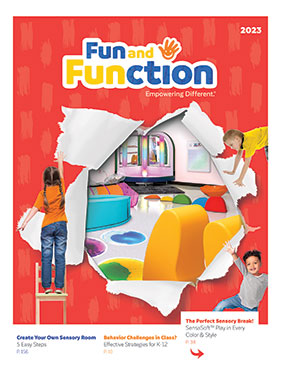One of the first things any educator who works with kids with Autism Spectrum Disorder learns is the importance of using schedules. Schedules help all of us organize our time and make sense of our day. We all know how having our calendar or schedule near by can help us feel less anxious - having a concrete way of knowing what to expect in a day or even just a chunk of time can help an individual with an ASD feel more relaxed and willing to participate in the days' activities.
There are as many kinds of schedules as there are kids who benefit from them, but there are a few basic principles that can help you develop effective schedules for your students. When I would develop a schedule for a new student, I asked myself a series of questions to get started.
1. Does the student read with comprehension? If the student is a reader who understands what he or she reads, I would begin with a written schedule, where each of the days' events are written down with the time and duration. If the student is still learning to read, I'd begin with a picture schedule instead of a written one. Picture schedules use images to represent the different daily events, laid out in chronological order. Picture schedules can be made with commercial image library software (the most well known is Boardmaker) or with photographs.
2. How much schedule can the student process at one time? Some students like to see the entire day laid out from start to finish, others work better seeing it in smaller pieces. When working with a student who is new to using a schedule or only able to process smaller groups of information at a time we may only focus on three events at a time. For example, when a student arrives to school in the morning, her schedule would show the first three events of the day.(i.e. Attendance, Say the Pledge, Turn in Homework) When one event is finished, it's replaced with the next event on the schedule. I managed schedules like these with lots of velcro - I'd attach a strip inside a binder, print out events (either pictures or words) on cardstock with Velcro on the back and teach the student to rotate events independently.
3. What other skills can I teach with the schedule? Schedules are great teaching tools, with a nearly infinite number of ways to integrate into other areas of the curriculum. Along with the personal responsibility and independence managing a personal schedule can provide, it can easily be used to teach reading and math skills. Teaching time? Use pictures of clock faces displaying the current time along with events on the schedule. Teaching reading? Written schedules are full of practical, real life text, picture schedules can be labeled with simple words or phrases.
I've made schedules in binders, file folders, hanging inside lockers, across the tops of desks and in wallets that hang from belt loops - finding the right method for each student can involve some trial and error. I've found involving the student in the process is a huge help, and being part of the creation of the schedule gives students a sense of ownership. I usually let my students decorate and personalize their schedules with stickers and crafty items, as well. I always make at least two copies of everything, so there's a backup if the schedule is left at home or if something happens to it. I found most of my students took great pride in maintaining and keeping track of their own schedules.
I'd love to hear your creative schedule making solutions, as well as any questions you might have about using schedules with your students. Share your ideas with us at social@funandfunction.com or on our social media pages!


















Comments